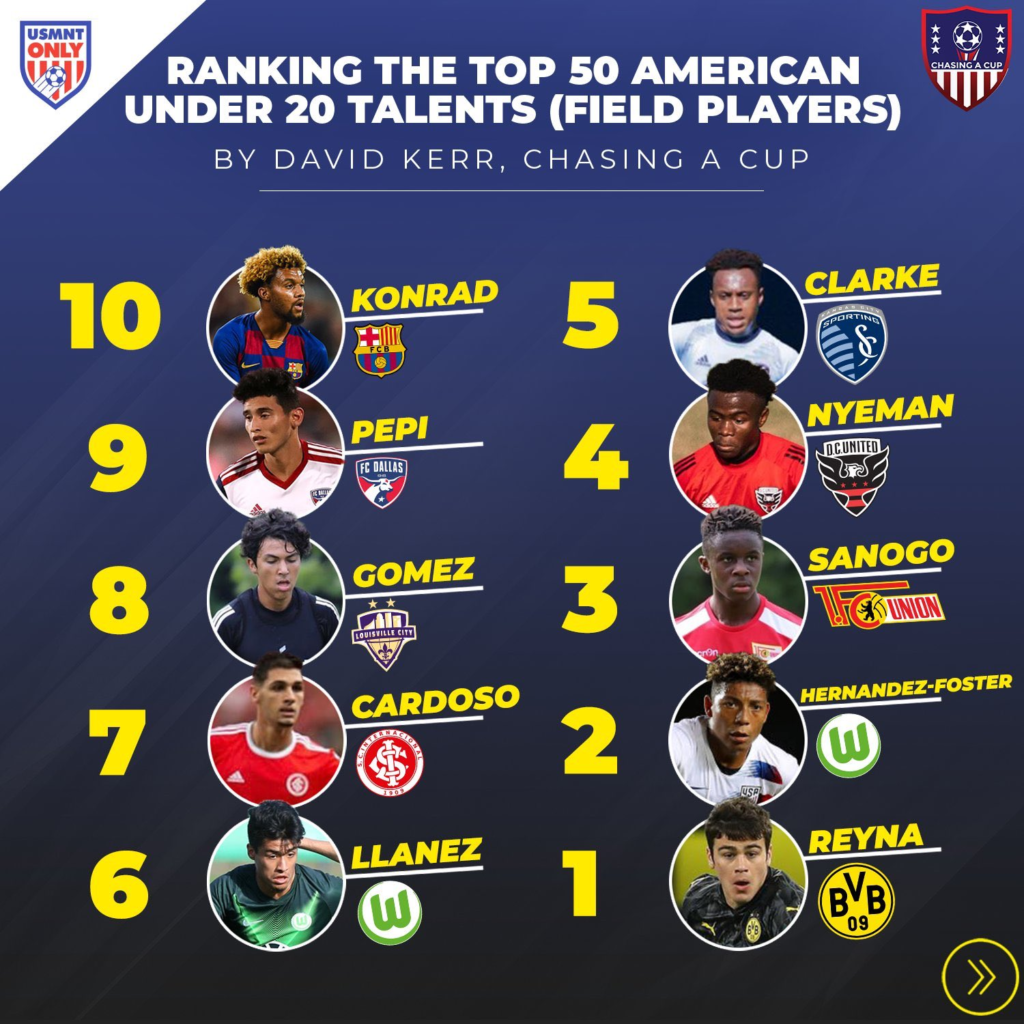

USMNT
The 433 and why the USMNT is “forcing” a playmaking 6
Published
4 years agoon
By
Shawn BrooksThe base formation for the USMNT under Berhalter has been the 433. That’s been unchanged. If you look around the world at some of the best teams, many seem to have the base of a 433. Man City, Liverpool, Real Madrid, Bayern, Barcelona, Ajax. Why is this structure or formation so popular?
I have a theory.
Formations and systems are trendy. It wasn’t that long ago that the 4231 was all anyone had been playing. In the last year, we saw a heavy use of 3 in the back systems across the major teams. Tuchel went from heavily using the 433 at PSG to using a 343 variant at Chelsea to great effect. Man City and Barcelona were seen using the 343 a lot this year too. The base still seems to be the 433.
Strengths and weaknesses
One thing most anyone who has coached soccer or studied soccer for any amount of time will agree on, is that there is no magical formation. Every system has weaknesses and most players and coaches learn those early on.
A few examples:



The advantages and disadvantages of a particular system can fill whole books and videos. There are lots of nuances, variations and adaptations as well. The point is- every system or formation has weaknesses and strengths.
If a team has one way of playing and one set of starting 11, then they become very easy to scheme against. A better talented team may still win. A team can even “punch up” if their particular personnel strengths play to another team’s particular weaknesses and that coach is poor at tactical schemes. But a team playing one starting 11 with the same starting 11, will always be at a disadvantage against a team that has multiple tools in the tool box and an understanding on how to attack your weaknesses.
Tactical Flexibility
Every coach knows the basic answers to a formation’s weaknesses. Therefore the best system is one that is highly adaptable. The 433 is one of the most adaptable systems you can play. With simple role changes, the system can look like a completely different system. (I am purposefully oversimplifying for the examples.)

If your opponent is troubling your 6 or if you’re having trouble with numbers in the midfield you can simply drop an 8 deeper.


The 433 has the most different versions. With one base system, tactically adept managers can get a lot of tactical flexibility. This is how managers like Pep and Tuchel can create so many different problems and solutions out of one team. They try to keep the changes simple and base the same. The run patterns, principles, and solutions to problems can all be the same and the requests of the players can change from game to game.
Fans often can’t see the trees because of the forest. A coach can tweak individual roles and keep the base the same. The forest shape looks different but it was changed with one tree.
Tactical variability
This tactical flexibility has led to a new form of Total Football. Total Football originally was all about interchanging players to different roles on the field. It requires players with the ability to play different positions in game. With the tools of diverse players and a system with flexible tactics, tactically adept managers can create new dimensions of problems to solve and solutions.
Modern soccer tactics have evolved beyond a single structure or formation. A team will use often use at least 4 structures these days. First, is their base. For the US this is the 433.

The second is one in possession that they want to use to break teams down. For the US this is most often the 2323.

The third is what they want to use in a transition and against a mid block.

The last is what they want to use in a low block. This seems to be a 4231 or 4141.

Out of one “formation,” common patterns of play, set solutions to teams attack/ defense patterns, a team can get an incredible amount of tactical variability. It’s why many managers struggle or scoff at the idea of what “formation” they play. They play many in different situations and different match ups. A key to winning close games in modern US soccer tactics is tactical flexibility.
Roles and Role Profiles
The next logical question is- if the US want to be that tactically flexible then why focus on player profiles at all? Why not just put the best 11 out there in the best system you can and play?
My theory is that the 433 creates the most diverse player profiles. If the goal of a system is to be tactically flexible then you need players that can cover a large range for roles. A tactical minded coach would want every possible tool in the tool bag.
This can be true for multiple roles from the 9 to even the GK. The most talked about recently for the US has been the 6. If I was writing a player profile and rating players on their ability to play the 6, it would look something like this:

From a recruitment and development standpoint, you want players that are 5 stars in every category. In the ideal world, you would then have at least 3 players deep at that role. One man is down, then another is up.
No team has that in reality- not even the best teams. The question I get the most about the 6, is why are they forcing a playmaking 6? If they don’t have one, simply don’t play one. I truly think this is a simple misunderstanding of the 6 and how modern teams are constructed. The overall system of play is built with predefine answers to problems created by the opposition. Good teams want all of those tools in the tool bag to win any particular match up.
If you’re in the structure below the most, then playmaking ability becomes very important all over the field to break down a pack defense. Against Honduras late, they had them backed into a low block and needed Brooks to play extremely high up to make a play over the top to McKennie that leads to the winning goal.

Even earlier in the game, the US seemed to work to keep Honduras out of the low block by making plays deeper with their CB’s. Without Brooks playing fantastically and without Honduras failing to man mark him- the US may not win that game. Wanting a playmaking 6 in that scenario made a lot of sense. If you go back and watch how badly he missed lots of opportunities, it highlights the need for that attribute on the team rather than the reverse.


Even in a low block set up, transition play often starts with the 6 from deep. They either provide an outlet to start the attack or a quick counter pass to start the attack. Adams, who is somewhat of a specialist for RB Leipzig in this, is probably at his best in starting the counter- as a playmaking 6. That is a key attribute of the role. One reason the US struggled to counter, build or do much offensively against Mexico is Acosta is a better disruptor and wasn’t much of an asset in the attack. It’s a key part of the role profile and having that player profile adds tactical flexibility.
Let’s look at Nashville SC as a counter example. Their base formation has been a 4231. Dax is something of a modern 6 but Godoy is more of a 6/8 hybrid. He’s more comfortable tackling than driving forward with the ball, making line breaking passes, or linking play. He often plays as a 6/8 in front of Dax, but because their base formation is 4231, their player profiles hedged defensively. One could say its’ worked with the level of success they’ve had for an expansion side but that base has limited their tactical flexibility.
You can move Godoy to an 8 and play more of a 433, but the team will still be a more defensive team than offensive. It’s how they were constructed. The player profiles provide the template for the tools the team wants in the tool bag. Those tools can determine how a team plays as much or more than formation.
The #9 as a comparison
Would you say the same thing of the 9? If we don’t have a striker, just don’t play one? No- you specialize per match up.
We saw this a great deal with Chelsea (and Man City) and the #9 last year. What any team would want in a #9 player profile would be things like hold up ability, intelligent runs, poaching/finishing ability, aerial ability, speed to get in behind and playmaking ability to drop into the midfield to move the CB’s and create opportunities for others. Neither Chelsea nor Man City had a #9 who fit all of those attributes this year. So they used the players they had as specialist for particular match ups.
This is simply what good teams do. Giroud, Havertz, and Werner give you different attributes all by playing the same role, the same way but with different strengths. Havertz will do better coming back and creating. He’ll pull Cbs up and out more. Giroud will win headers, provide a target to combine with and Werner will stretch them vertically. They will do this though all playing the same patterns. The system needs to run the same so that the players quickly use the right solution to the right problem provided by the opposition.
You don’t tell Werner to stop trying to win aerial balls. You don’t tell Giroud to never drop into the midfield. You don’t change the team’s patterns of play based on who is available or preferred that game. You just pick the right players with correct attributes for a particular match up. When coaches get this right it makes these specialists look world class. When they get it wrong, you get fans thinking the players and coach are trash. This was seen a lot with Giroud last year and Jorginho and Kante through the years. Ask Kante to be the deeper playmaker and he seems a flawed player. Let him be a disrupter (either as a 6 or 8) and he looks world class. Same for Jorginho. Set him up to be a deeper play maker and positional defense expert, and he looks world class. Ask him to be a disrupter or destroyer and he looks horrible.
What managers who compete with the best teams and best managers in the world want, is that tactical diversity at the highest level. They then need to define what those attributes are so teams can recruit and acquire them.
Poorer teams or national teams with less options to buy talent do a similar process but have to rely even more on specialists to fill roles. They are even less likely to get players who are the best at every attribute of a role. They rely more on specialists. Some teams are graced with Rodri who can do everything a role demands. Or teams like France who are simply more talented than everyone else. Many teams are not and what they do is select the right specialist for the particular match up.
The structure (formation) of a team can change from game to game and even within a game. The player profiles are the base players that a coach/manager wants to build around. With club teams, it’s who they recruit, transfer for, and develop. For national teams it’s really the same except transfer. It’s the base roles that they want to recruit (dual nationals), discover through scouting their profile, and develop by getting them recognized for bigger teams.
By having player profiles, a club can build a squad with the most tactical options. The weaker the team’s talent pool, the more reliant a team will be on specialists. The deeper the talent pool, the more tools a manager has in his tool bag to create problems for the opposition.
The US have unique problems as they have a huge drop off from most of their starting players to their depth. It creates more emphasis on getting those specialist right and much greater criticism when those specialist fail at their role.
The US are not forcing anything
The trick in the modern game is not having one tactical setup that you roll out every match. It’s how tactically diverse can your team be? They have to predict which structures will be used the most in a given game. Will we be in the low block the most? Will we be in the high press the most? Will we be breaking down the low block the most? How can we force the other team to be in the set up that we most want? Then- what player attributes do I have in my tool box to keep us in that formation and win the game? How do I ensure that I have the right variety of tools to match 90% of the problems we’ll see?
The US is not forcing a playmaking 6. They have a player profile for every position and then are attempting to choose the right tool for the right matchup. Yueill over Acosta to break down Honduras and make plays from deep (which he did poorly). Siebatcheu for Sargent to win balls in the air. Acosta for Yueill to add disruption and rangy press.
I think we can all expect this to continue and not stop as the player pool increases in talent. Right now Adams is levels better at most every attribute of the player profile at the 6, but even if we can get 23 players who are all world class- current modern tactics likely dictate a player will be chosen per match up rather than a simple depth chart. While fans love to create depth charts at every position, the reality of those depth charts are likely a lot more complicated.
Why the 433 and 433 profiles?
The 433 and its profiles fill out the tool bag and sets up a diverse operating template for the modern soccer chess match.
You may like
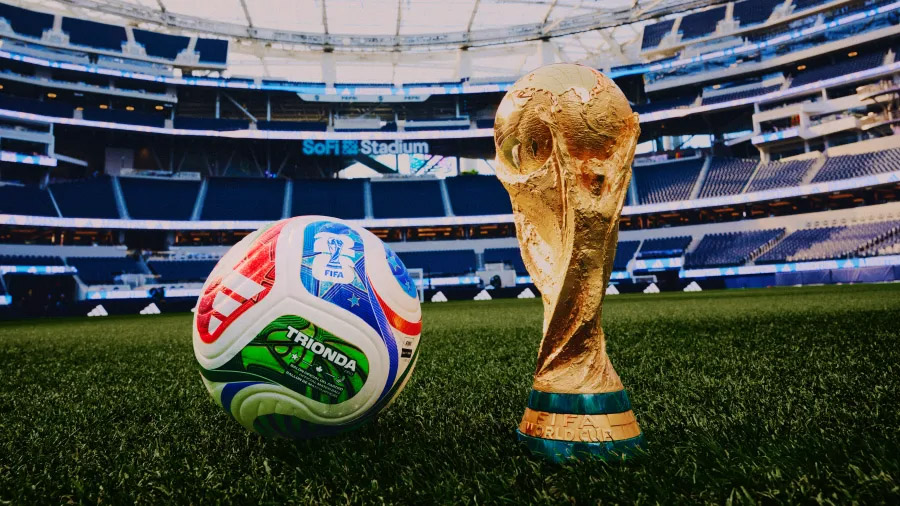
From Maradona to Messi: A Quick Look at World Cups 1986–2022
Thomas Deschaine (@uskeeper on X and us_keeper on Instagram)
A quick look back at the last ten World Cups reveals how the world’s greatest sporting event has evolved and grown through the decades. With over 200 days until the 2026 FIFA World Cup kicks off, here’s a high-level recap of the tournaments that shaped its legacy, and a glimpse of what’s next.
1986 – Mexico
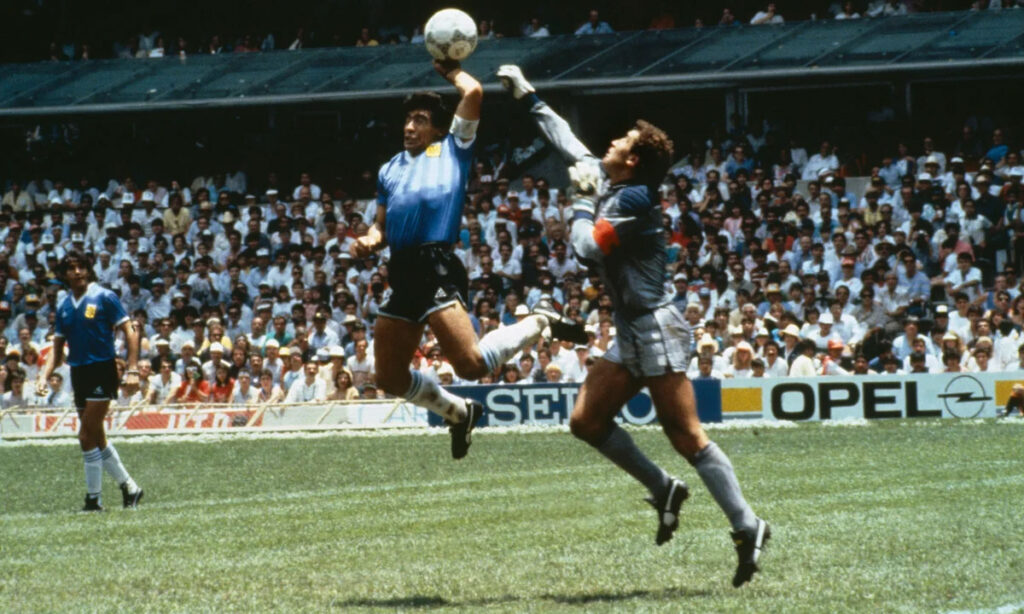
Diego Maradona delivered a World Cup for the ages, scoring both the “Goal of the Century” and the infamous “Hand of God” in the same match, then leading Argentina past West Germany to claim their second World Cup title.
1990 – Italy
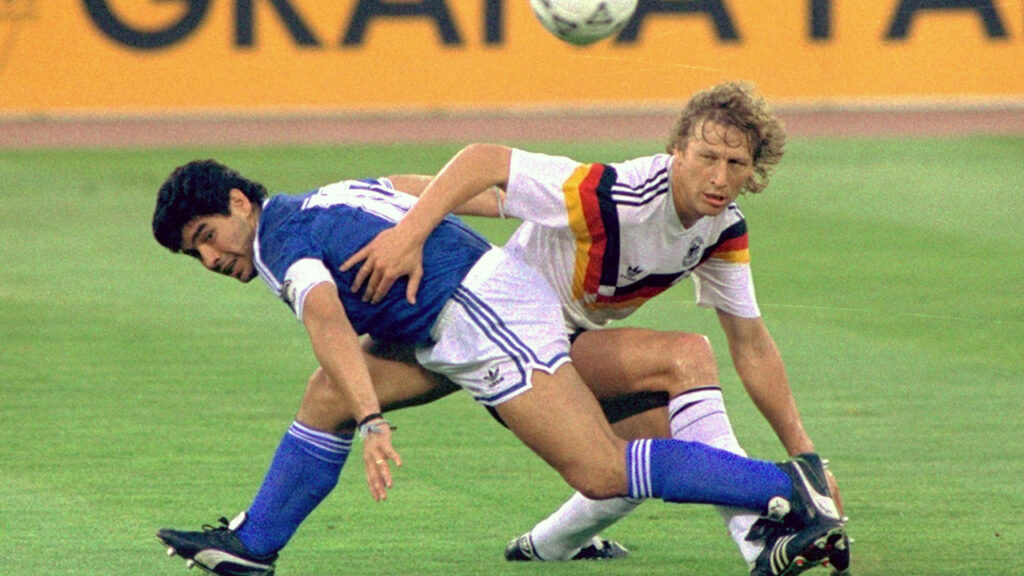
The USA returned to the World Cup after a 50-year absence in what became the lowest-scoring tournament in history, as West Germany edged Argentina 1–0 on a late penalty. It marked West Germany’s final World Cup before reunification.
1994 – United States
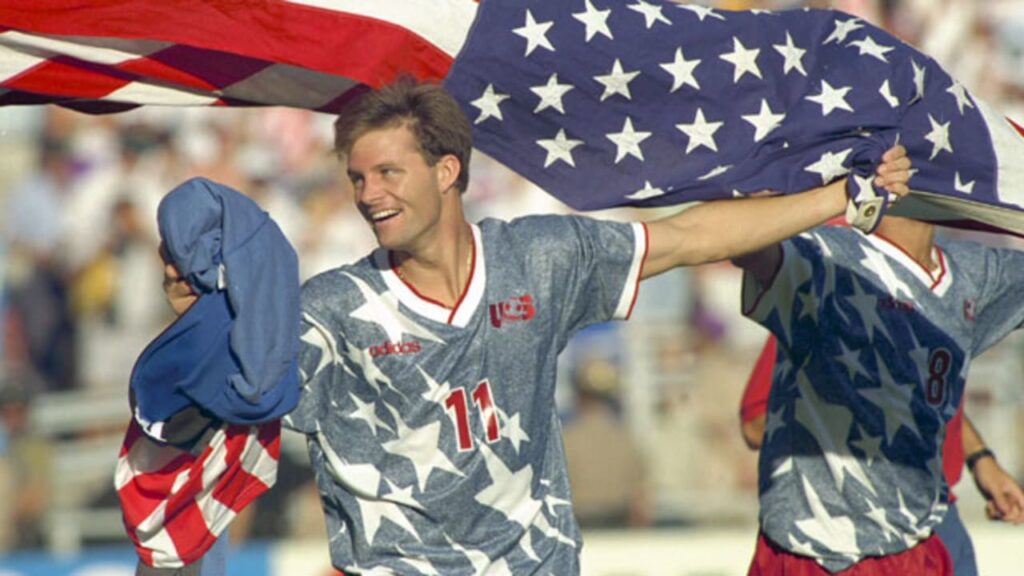
The USA hosted its first-ever World Cup, setting all-time attendance records as Brazil defeated Italy in the tournament’s first final decided by a penalty shootout in front of the largest crowds in US since the 1984 Olympics.
1998 – France
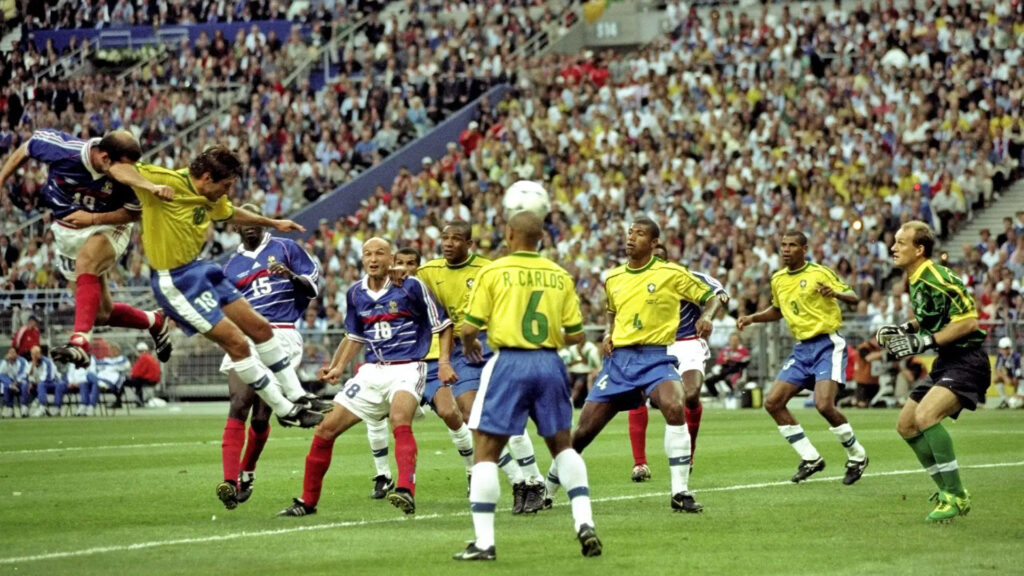
FIFA’s first 32-team World Cup saw host nation France capture its first-ever title, becoming the seventh country to win the trophy. Led by Zinedine Zidane triumphed on home soil with a commanding victory over defending champions Brazil.
2002 – South Korea/Japan
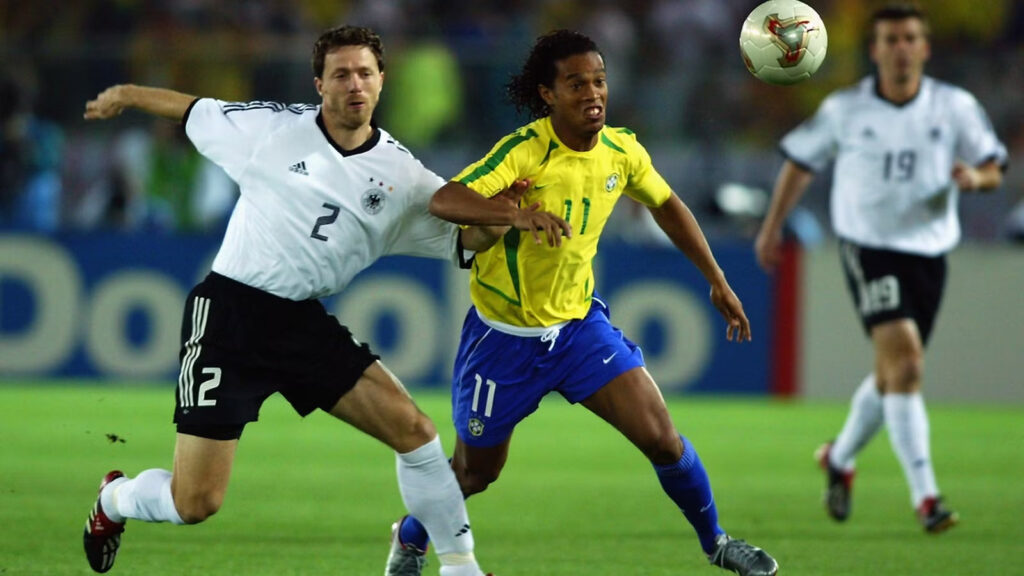
The first World Cup with co-hosting nations saw South Korea stun many by reaching the semifinals, while Brazil claimed their fifth title, powered by Ronaldo’s two goals in the final against Germany.
2006 – Germany
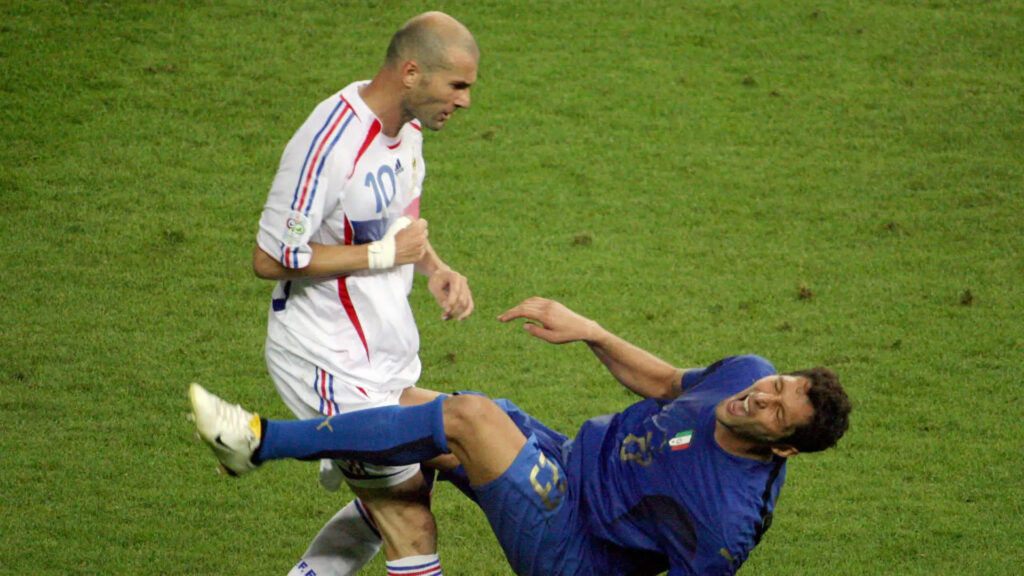
Germany came up short on home soil, losing in extra time to eventual first-time finalist Italy in the semifinal. Italy went on to claim its fourth World Cup, edging France on penalties in a final forever marked by Zidane’s infamous headbutt in extra time.
2010 – South Africa
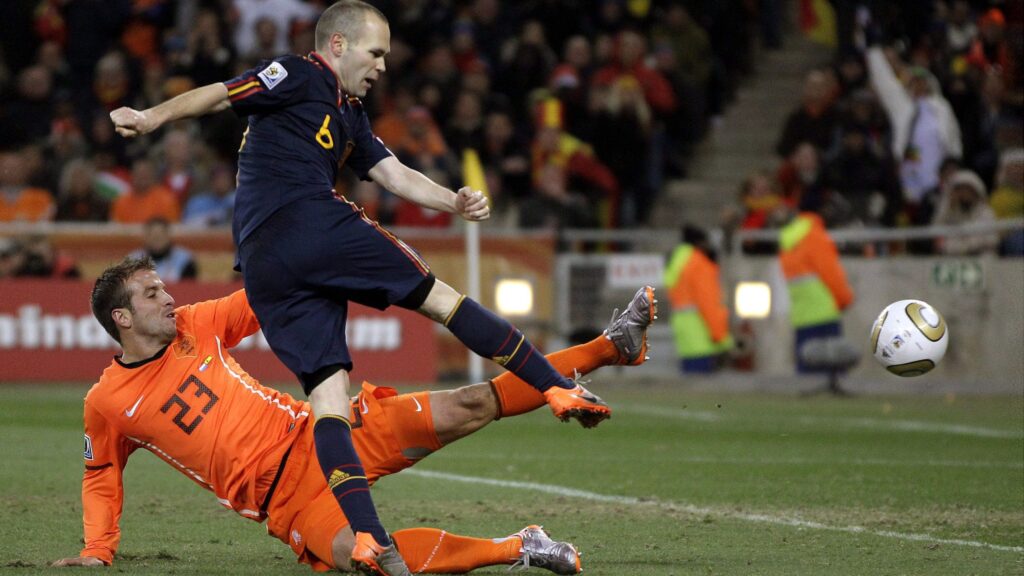
The first World Cup hosted by a CAF nation, South Africa, saw the host nation become the first ever to fail to advance past the group stage. Meanwhile, Spain captured their first World Cup, showcasing their tiki-taka mastery and defeating the Netherlands in extra-time with Andrés Iniesta’s decisive goal.
2014 – Brazil
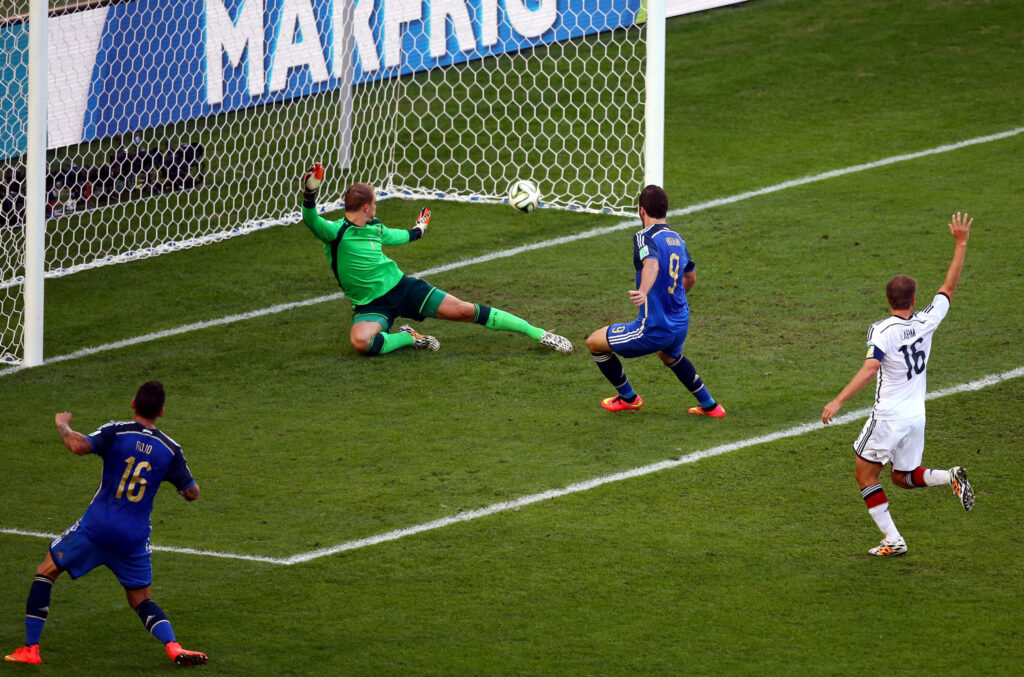
Host nation Brazil reached the semifinals on home soil but suffered a shocking 7–1 defeat to Germany and then fell 3-0 to the Netherlands in the third-place match. Germany went on to defeat Argentina in extra time, with Mario Götze scoring the decisive goal, while Lionel Messi claimed the Golden Ball as the tournament’s best player.
2018 – Russia
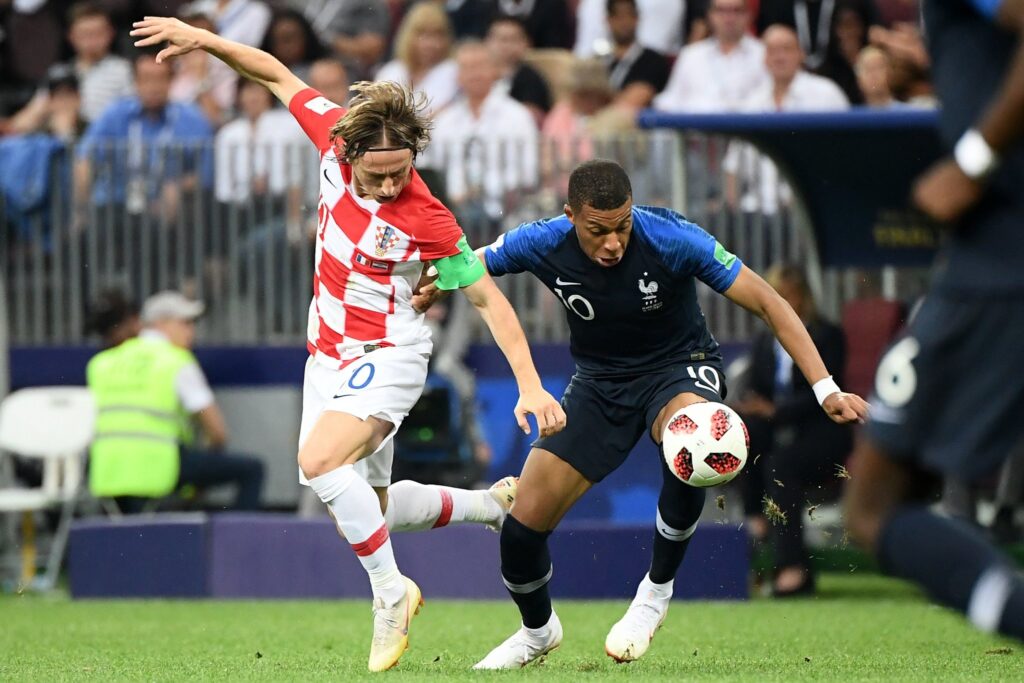
France’s golden generation, spearheaded by tournament Best Young Player Kylian Mbappé, captured their second World Cup title with a thrilling 4–2 victory over Croatia, led by Golden Ball winner Luka Modrić.
2022 – Qatar
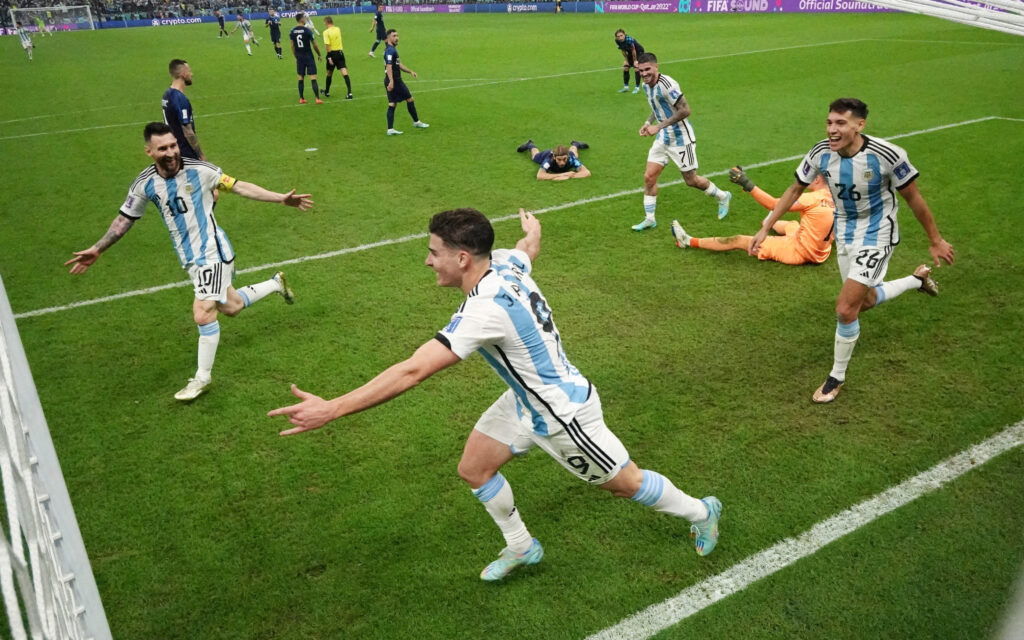
The 2022 World Cup, overshadowed by controversies over migrant worker treatment and extreme heat, which pushed the tournament to November and December, ultimately delivered a historic finale. Lionel Messi achieved crowning glory as Argentina triumphed on penalties in a thrilling 3–3 final against France, highlighted by Kylian Mbappé’s hat-trick.
2026 – United States/Mexico/Canada
The 2026 World Cup will feature a major expansion from 32 to 48 teams and, for the first time ever, be hosted by three nations. Mexico will make history as the first country to host matches in three different World Cups, while the United States becomes the sixth nation to host at least twice. What unforgettable moments will define this landmark tournament?
USMNT
One Home or Many? The Debate Over a Primary Venue for U.S. Soccer
Published
4 weeks agoon
October 16, 2025
Thomas Deschaine (@uskeeper on X and us_keeper on Instagram)
The logics of the United States make it almost impossible for the USMNT or USWNT to have a primary venue to play all of their home matches but a trend of playing in a handful of stadiums has been developing over the last couple of cycles. US Soccer says there are specific factors behind where matches are played, some make sense, while others come across as lazy or lacking creativity.
If and when Major League Soccer aligns with the FIFA calendar and observes international breaks, more MLS stadiums could become available for matches. While not all MLS venues currently feature natural grass, US Soccer has indicated they would be willing to invest in installing grass, though at a cost of around $500K and with potential concerns about surface reliability.
Global Approach to Scheduling
Many of the top-tier international teams play their World Cup qualifiers and other critical matches in a primary venue or two. Here’s a sample of some of those countries and generally where they play based on my research.
Here are some of the more notable nations that play nearly all of their home matches at a single venue, a setup made practical by their smaller size and simpler logistics, which also makes it easier for fans.
Germany and Spain are known for rotating their non-critical home matches across multiple venues.

Argentina-Estadio Monumental (River Plate)
Belgium– King Baudouin Stadium (Brussels)
Colombia-Estadio Metropolitano Roberto Meléndez
England-Wembley Stadium
France– Stade de France (Saint-Denis, near Paris)
Italy-Stadio Olimpico
Northern Ireland-Windsor Park (Belfast)
Norway-Ullevaal Stadion (Oslo)
Portugal– Estádio da Luz (Lisbon)
Republic of Ireland-Aviva Stadium (Dublin)
Scotland-Hampden Park (Glasgow)
Uruguay-Estadio Centenario
Wales-Cardiff City Stadium
What’s in a location?
Here’s a look at the past few cycles, highlighting the USMNT’s home matches and the venues they’ve used. While US Soccer has clarified that they don’t control Gold Cup or Nations League venue selection, a point still under debate, they do manage the locations for Friendlies and World Cup qualifiers and continue to review and adjust those choices.
2026 Cycle (Matches Scheduled Through the end of 2025) – 46 Home Matches – 30 unique cities
So far, half of the USMNT’s home matches in the 2026 cycle have been held across eight venues. Only two more windows, March and May/June, remain for Friendlies before the 2026 World Cup.
- 4-AT&T Stadium, Arlington, Texas
- 4-Energizer Park, previously CityPark, St. Louis, Missouri
- 4-Q2 Stadium, Austin, Texas
- 3-Inter&Co Stadium (previously Orlando City Stadium and Exploria Stadium, Orlando, Florida
- 2-Allegiant Stadium, Paradise, Nevada
- 2-Geodis Park, Nashville, Tennessee
- 2-Rentschler Field, East Hartford, Connecticut
- 2-TQL Stadium, Cincinnati, Ohio

AT&T Stadium, Arlington, TX
2022 Cycle – 43 Home Matches – 24 unique cities
I can almost give US Soccer a pass on city and venue selection during the 2022 cycle, given the global circumstances at the time. That said, it’s interesting that they scheduled three consecutive home World Cup qualifiers in Ohio, with final round two matches in Columbus. Columbus has been a recurring choice, hosting multiple qualifiers in 2014, 2018, and 2022, handling one match each during both the semifinal and final rounds of qualifying in 2014 and 2018.
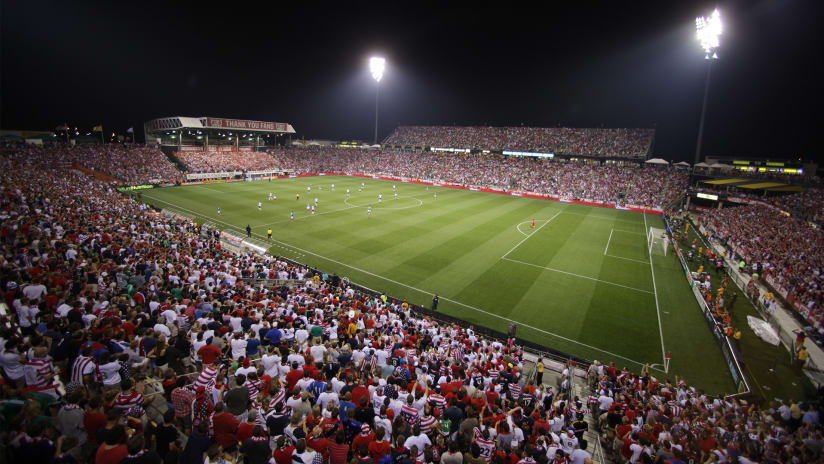
Lower.com, Columbus, Ohio
2018 Cycle – 47 Home Matches – 33 unique cities
During the 2018 cycle, the USMNT played in a wider variety of cities and venues. Aside from four matches in Carson, California for the January camp, they only repeated a location eleven times.
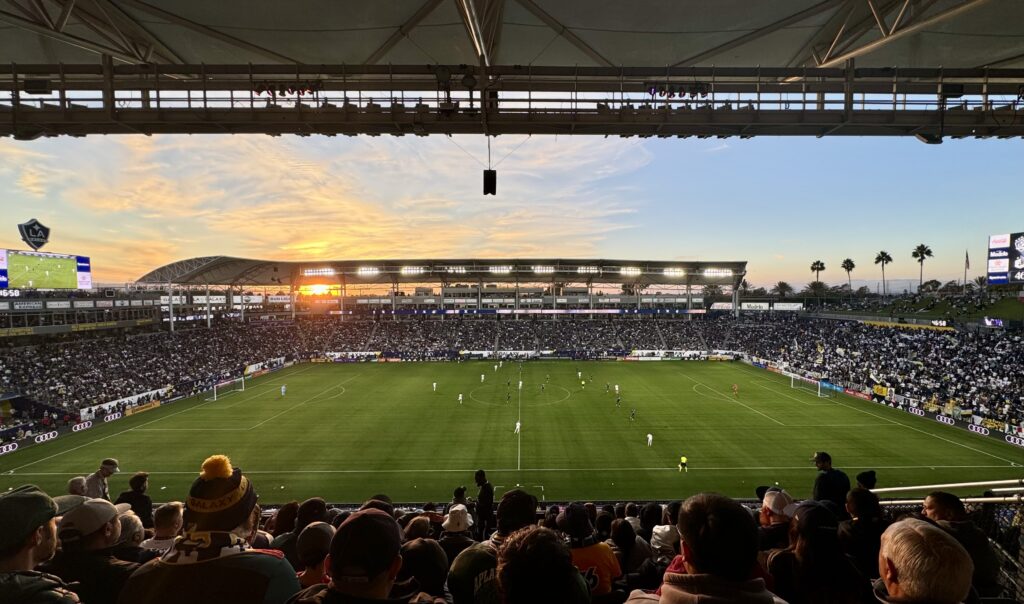
Dignity Health Sports Park, Carson, CA
2014 Cycle – 43 Home Matches – 29 unique cities
During the 2014 cycle, the USMNT repeated cities twelve times, but only two cities hosted more than two matches: Carson, California, where two of three games were for Camp Cupcake, and Kansas City, Kansas, which hosted three matches.

Children’s Mercy Park, Kansas City, Kansas
2010 Cycle – 35 Home Matches – 18 unique cities
One of the leanest home schedules in recent cycles saw the USMNT play in just 18 different cities, with 11 of them hosting only a single match. Over half of their home games were concentrated in four cities: Carson, California (7 matches); Chicago, Illinois (5 matches); and Foxborough, Massachusetts and Washington, D.C. (3 matches each).
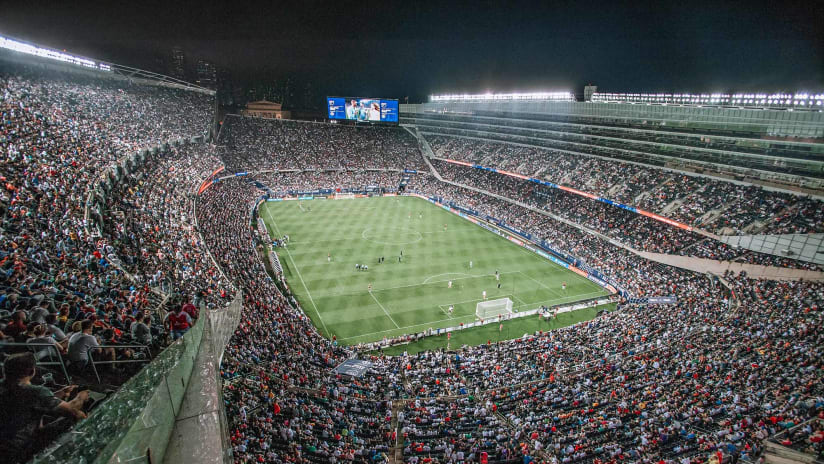
Soldier Field, Chicago, IL
2006 Cycle – 44 Home Matches – 24 unique cities
The USMNT played eight matches in Foxborough, Massachusetts—double the number held in the next two cities, Columbus, Ohio, and Miami, Florida, which each hosted four matches. Notably, the team has excelled in Foxborough, losing only once in 22 games played there.
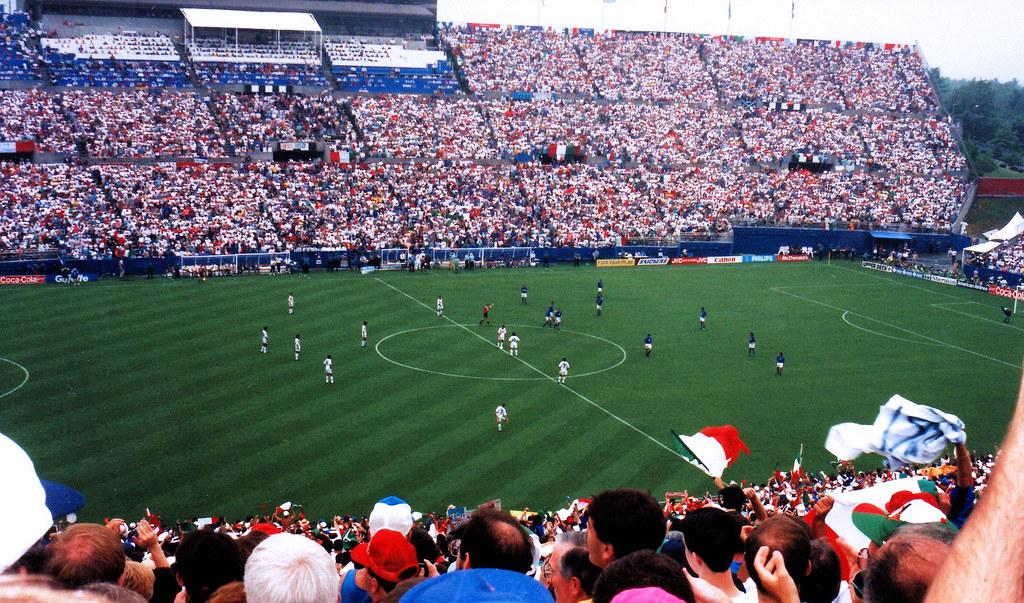
Foxboro Stadium, Foxborough, MA
2002 Cycle – 38 Home Matches – 16 unique cities
During the 2002 cycle, California was clearly a preferred destination for the USMNT, hosting matches in five different cities across twelve games. Foxborough, Massachusetts, and Washington, D.C. each hosted five matches as well.

Rose Bowl Stadium, Pasadena, CA
1998 Cycle– 40 Home Matches – 21 unique cities
Washington D.C. was the city of choice for the USMNT during the 1998 cycle playing six matches. The USMNT would also play more than two matches in Los Angeles, California (5 matches), Foxborough, Massachusetts (4 matches) and Pasadena, California (3 matches) while playing only one match in twelve other cities.

RFK Stadium, Washington, DC
Long Term Venue Strategy
While US Soccer may favor a single venue for most USMNT and USWNT matches, doing so would limit access for thousands of fans across the country. However, with the move to Georgia and the Arthur M. Blank U.S. Soccer National Training Center set to open in early 2026, ahead of the World Cup, it’s likely that future matches will focus on venues within three to four hours of Atlanta. We can expect the majority of games to continue taking place in roughly ten to twelve core cities.
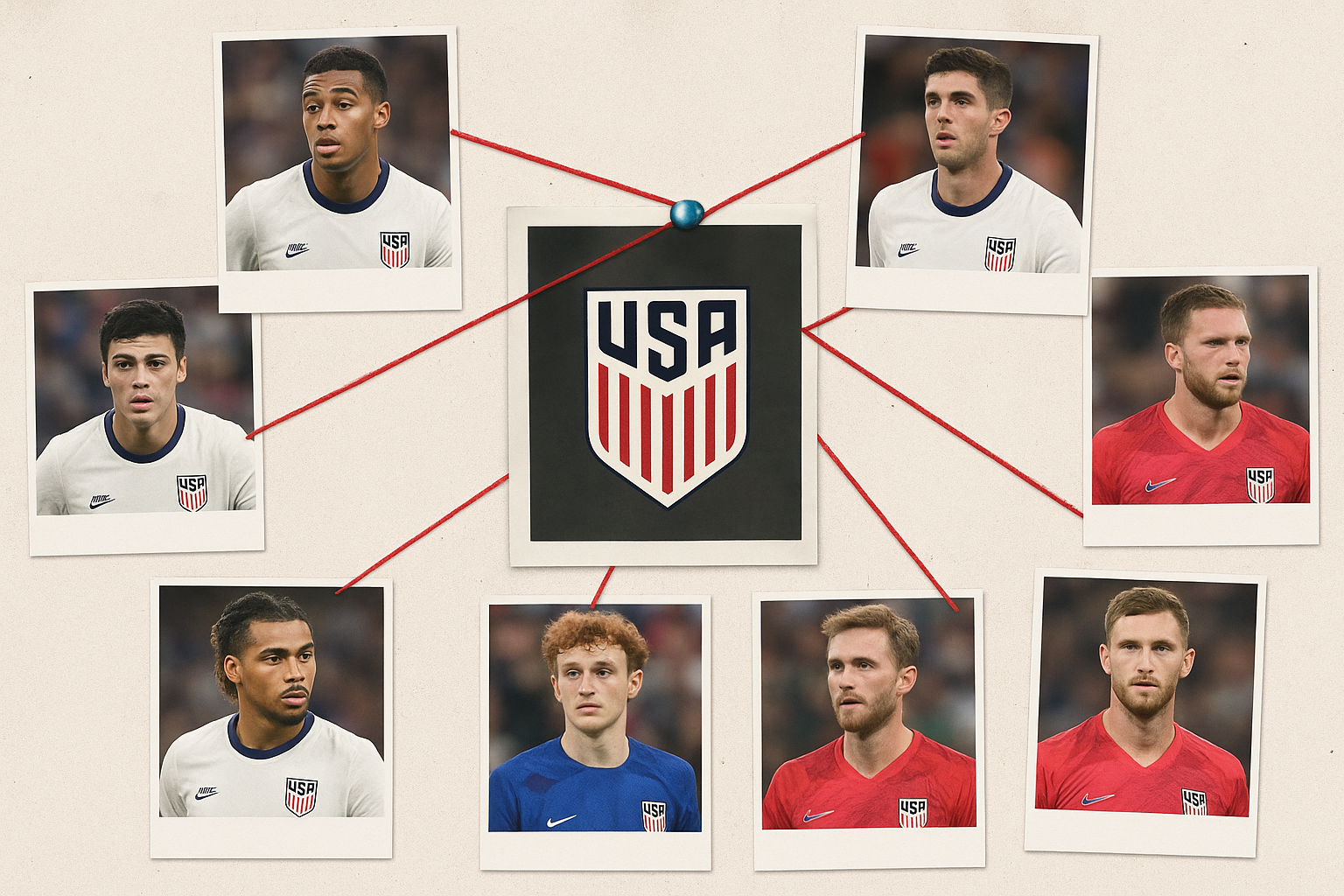
Thomas Deschaine (@uskeeper on X and us_keeper on Instagram)
With the September FIFA window now in the rearview mirror, and only three more windows left before final rosters are set in late May or early June 2026, Mauricio Pochettino has drawn a clear line.
He’s stated that September’s camp was the “last camp to have the possibility for new faces.”
If we take him at his word, the nearly 70 players who’ve been called across six camps and the Gold Cup will form the pool from which he selects the 2026 World Cup squad.
Of the 60 players named to the 2025 Gold Cup provisional roster, only five, Maxi Dietz, Richie Ledezma, Tim Tillman, Caleb Wiley, and Griffin Yow, have yet to appear on a #USMNT roster under Pochettino.
Comparing the 2025 Nations League provisional roster to the Gold Cup list reveals over a dozen different players, raising the question: are these minor differences simply the edges of the player pool Pochettino intends to draw from?
Goalkeepers
Nine goalkeepers have been called into Pochettino’s camps, but it’s clear that Matt Freese is his first-choice right now, with Matt Turner likely the No. 2 as we sit just 10 months from the World Cup.
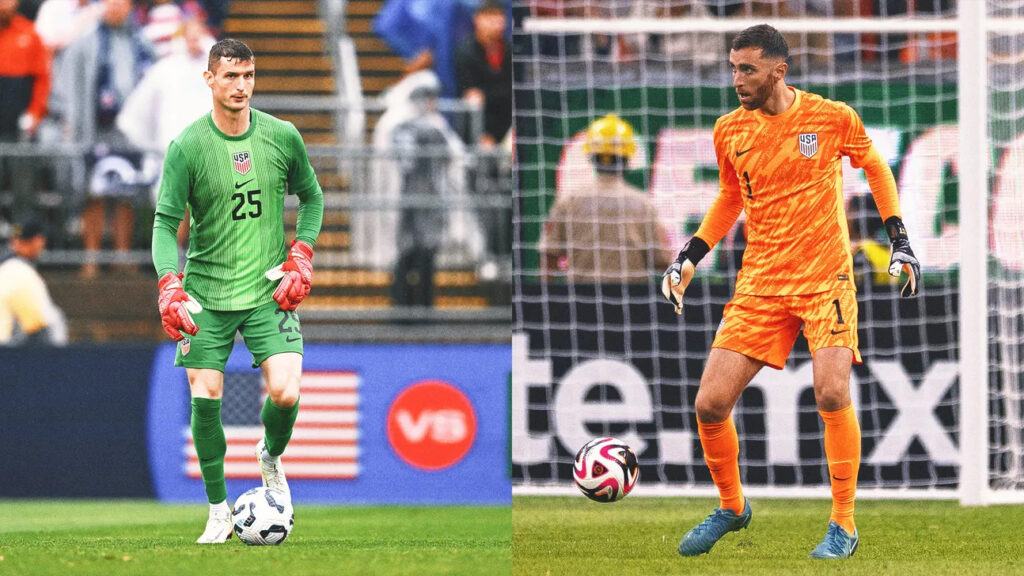
- Chris Brady
- Drake Callender
- Roman Celentano
- Matt Freese
- Ethan Horvath
- Jonathan Klinsmann
- Diego Kochen
- Patrick Schulte
- Zack Steffen
- Matt Turner
Fullbacks
Outside of Sergiño Dest and Antonee Robinson, the USMNT’s fullback depth remains a concern. Pochettino appears high on MLS defenders Alex Freeman and Max Arfsten, while Caleb Wiley, though yet to feature in a USMNT camp but named to recent provisional rosters, could still be on his depth chart.

- Max Arfsten
- Sergino Dest
- Alex Freeman
- Marlon Fossey
- DeJuan Jones
- Kristoffer Lund
- Shaquell Moore
- Antonee Robinson
- Joe Scally
- John Tolkin
Centerbacks
Center back remains another position with uncertain depth. Chris Richards and the veteran Tim Ream look like locks for now, leaving three spots up for grabs. If Pochettino opts for a back three, that tactical shift could influence which players ultimately make the cut. Notably, Jackson Ragen and Maxi Dietz are the only center backs from the recent provisional rosters who haven’t been called into a USMNT camp.
- Noahkai Banks
- Tristan Blackmon
- George Campbell
- Cameron Carter-Vickers
- Mark McKenzie
- Tim Ream
- Chris Richards
- Miles Robinson
- Auston Trusty
- Walker Zimmerman
Central Midfielders
The central midfield position is the deepest for the #USMNT, with many players in the pool capable of also playing fullback, center back, or winger. Although Richie Ledezma has primarily played as a right back and right wing-back for his current club and for PSV last season, USMNT coaches view him primarily as a midfielder. This likely explains why he hasn’t yet been called into a USMNT camp.

- Tyler Adams
- Sebastian Berhalter
- Gianluca Busio
- Johnny Cardoso
- Ben Cremaschi
- Luca de la Torre
- Emeka Eneli
- Jack McGlynn
- Weston McKennie
- Aidan Morris
- Yunus Musah
- Tanner Tessmann
- Sean Zawadzki
Attacking Midfielders
There are several players at this position who could add real quality and play pivotal roles for the #USMNT at next summer’s World Cup. Gio Reyna remains a major question mark, but his talent is undeniable. With his recent club change, there’s hope he can return to the high level of form we’ve seen from him in the past.
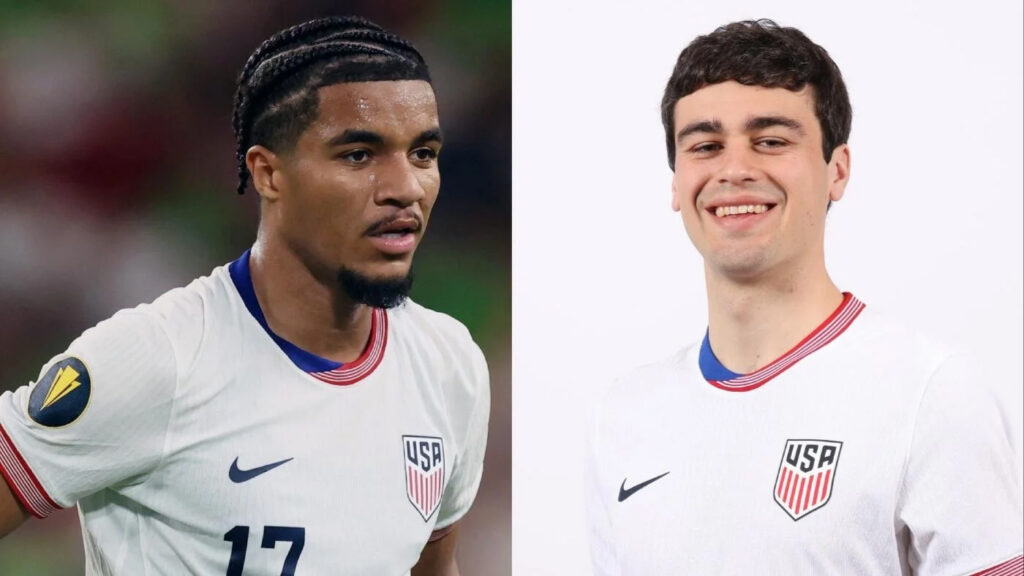
- Brenden Aaronson
- Paxten Aaronson
- Brian Gutiérrez
- Djordje Mihailovic
- Matko Miljevic
- Gio Reyna
- Malik Tillman
Wingers
The winger position remains thin for the #USMNT, though several players there can also slot in as attacking midfielders, strikers, or even fullback. Notably, two young wingers, Cole Campbell and Griffin Yow, appeared on provisional rosters but have yet to be called into any Pochettino camp.
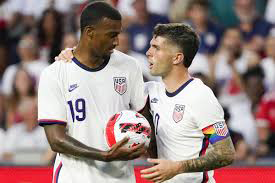
- Cade Cowell
- Diego Luna
- Christian Pulisic
- Quinn Sullivan
- Indiana Vassilev
- Tim Weah
- Haji Wright
- Alejandro Zendejas
Strikers
Another area of concern for the USMNT is striker depth. While the top options have all produced well for their clubs when healthy, injuries have kept the pool thin. If everyone is fit, the primary competition for the starting role likely comes down to three players: Folarin Balogun, Ricardo Pepi, and Josh Sargent. Haji Wright and Tim Weah can also step in as center-forward options if needed.

- Patrick Agyemang
- Folarin Balogun
- Damion Downs
- Jesus Ferreira
- Ricardo Pepi
- Josh Sargent
- Brandon Vazquez
- Brian White
Conclusion
It’s tough to read Pochettino’s mindset right now. Many expect fewer MLS players to be called for the October window, partly because the league continues through FIFA dates and the regular season ends mid-October.
Most World Cup rosters largely select themselves, with only a few surprising omissions, think of the 1994 squad, which left out several players many felt deserved a spot.
But with Pochettino still showing a shaky grasp of the USMNT player pool, this cycle could produce more notable snubs than ever, though there’s still time for him to get it right.


From Maradona to Messi

One Home or Many? The Debate Over a Primary Venue for U.S. Soccer

The constructing of a World Cup roster

Trending
-

 Club News1 year ago
Club News1 year agoAmerican Transfers: Stock Up & Stock Down
-

 USMNT2 years ago
USMNT2 years agoUSMNT Kits Come in Different Styles and Colors
-

 Club News6 years ago
Club News6 years agoJulian Vincente Araujo
-
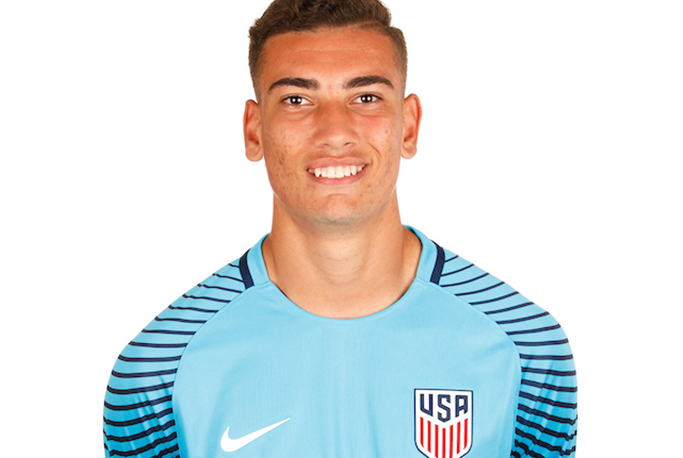
 Club News5 years ago
Club News5 years agoCJ dos Santos, Benfica
-

 USMNT5 years ago
USMNT5 years agoA Hidden Gem: Barça Residency Academy
-
USMNT3 years ago
World Cup Format History
-

 USMNT2 years ago
USMNT2 years agoIs the MLS Specifically Targeting Expansion to USL Cities?
-
USMNT6 years ago
MLS Quota


